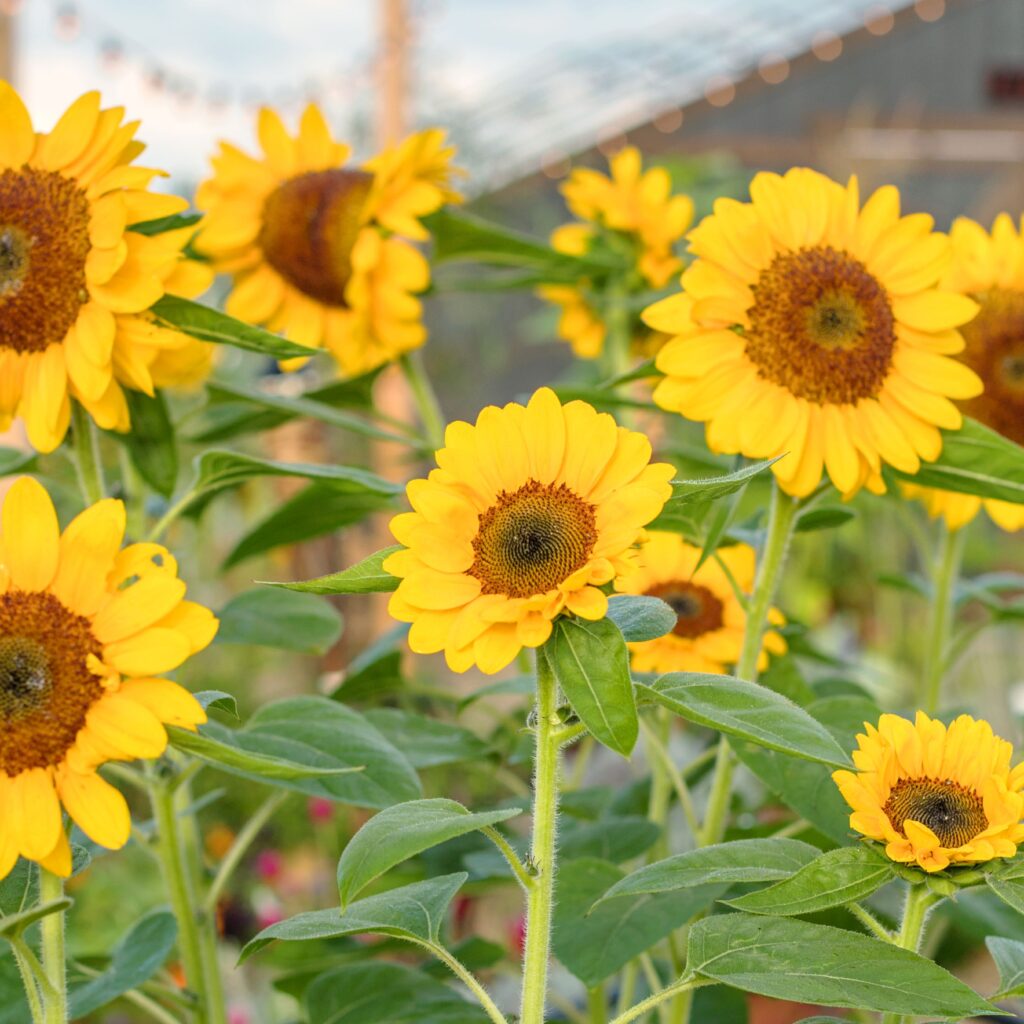Few flowers brighten a garden quite like sunflowers. With their towering stems and bold, radiant blooms, sunflowers symbolize warmth, positivity, and energy. Whether you’re growing a field of giant sunflowers, dwarf varieties in containers, or decorative types along your garden fence, one critical aspect of sunflower care is proper watering.
While sunflowers are known for their hardiness and ability to withstand heat, their large size, fast growth, and broad leaves mean they require a consistent and thoughtful watering schedule to reach their full potential. If you’ve wondered how often should you water a sunflower?, this comprehensive guide covers everything you need — from seasonal watering patterns and soil considerations to troubleshooting common watering issues.
Understanding a Sunflower’s Watering Needs

Sunflowers (Helianthus annuus) are native to North America, where they naturally grow in open fields and prairies exposed to long hours of sunlight and periods of both rain and drought. While mature sunflowers can tolerate dry spells, their early growth stages and flowering periods demand steady moisture.
The key to watering sunflowers is maintaining even soil moisture during active growth without overwatering, which can lead to root rot or fungal diseases. Different sunflower varieties and planting methods — in-ground or containers — will also influence watering frequency.
How Often Should You Water a Sunflower?
General Watering Guidelines:
- Newly Planted Sunflowers (Seeds or Seedlings): Water daily until established.
- Established In-Ground Sunflowers: Water once a week, deeply — increasing to twice a week in hot, dry weather.
- Container-Grown Sunflowers: Water every 1–2 days in warm weather and daily during heatwaves.
Golden Rule: Sunflowers prefer deep, infrequent watering rather than frequent, shallow watering. Always water when the top 1–2 inches of soil feel dry.
Seasonal Watering Schedule for Sunflowers

Spring (Planting and Early Growth)
Sunflowers are typically sown in late spring once soil temperatures consistently stay above 55°F (13°C).
- Seeds and Seedlings: Water daily to keep the soil lightly moist until the seedlings develop several true leaves.
- Avoid waterlogging, as overly wet soil can cause seeds and young roots to rot.
Summer (Active Growth and Flowering)
Summer is when sunflowers grow rapidly and require the most water to support their tall stems, large leaves, and heavy flower heads.
- In-Ground Sunflowers: Water once or twice a week, providing about 1–2 inches of water per session.
- Container Sunflowers: Water every day or as soon as the top inch of soil dries out.
- During heatwaves or windy weather, check soil moisture daily.
Tip: Early morning is the best time to water, allowing leaves to dry by evening and reducing the risk of fungal diseases.
Autumn (Late Blooming and Seed Head Maturation)
As sunflowers finish blooming and seed heads mature:
- Gradually reduce watering to once a week.
- Once the back of the flower heads turn brown and the plant starts to wither, stop watering entirely to dry out seeds for harvesting.
Winter
Sunflowers are annuals and typically die back after their growing season, with no further watering needed.
Factors That Affect Sunflower Watering Frequency

Several environmental and plant-specific factors influence how often sunflowers need water:
Climate and Weather
- Hot, dry, and windy conditions: Increase evaporation and require more frequent watering.
- Cool, cloudy, or rainy weather: Reduces watering needs.
Soil Type
- Sandy soils: Drain quickly and dry out faster, requiring more frequent watering.
- Clay soils: Retain moisture longer but need careful management to prevent waterlogging.
- Loamy soils: Ideal for sunflowers, offering balanced moisture retention and drainage.
Plant Size and Age
- Young seedlings: Have shallow roots and need more frequent, shallow watering.
- Mature sunflowers: Develop deep root systems and prefer deep, infrequent watering.
Container Size and Material
- Small pots and terracotta containers dry out faster than larger or glazed ceramic/plastic pots.
How to Properly Water a Sunflower

Water Deeply and Slowly
Water should penetrate the soil to a depth of 6–8 inches to reach the sunflower’s deep roots. Avoid shallow watering, which encourages surface rooting and makes plants less drought-tolerant.
Check Soil Moisture Before Watering
Use your finger or a moisture meter to test soil moisture 1–2 inches below the surface. If it’s dry, it’s time to water.
Water at the Base
Always water directly at the soil level, avoiding overhead watering to reduce leaf fungal issues like powdery mildew.
Use Mulch to Retain Moisture
A 2–3 inch layer of organic mulch (straw, compost, or bark chips) around the base of sunflowers helps conserve soil moisture, regulate temperature, and suppress weeds.
Signs of Overwatering and Underwatering in Sunflowers

Being able to recognize early signs of watering problems is crucial for adjusting care routines promptly.
Signs of Overwatering:
- Yellowing lower leaves
- Wilting despite wet soil
- Root rot (roots appear dark and mushy)
- Stunted growth
Solution: Improve soil drainage, reduce watering frequency, and remove any affected parts.
Signs of Underwatering:
- Drooping or wilting leaves, especially midday
- Dry, brittle leaves and stems
- Slow or stunted growth
- Cracks in dry soil
Solution: Water deeply and increase watering frequency, particularly during hot, dry periods.
Special Watering Tips for Potted Sunflowers
Container-grown sunflowers have different watering needs due to limited soil volume:
- Use a well-draining potting mix.
- Ensure containers have ample drainage holes.
- In hot weather, check moisture levels daily.
- Water until excess flows from the bottom of the container.
- Avoid water pooling in saucers, as it can cause root rot.
Additional Sunflower Care Tips
To complement your watering routine and encourage thriving sunflowers:
Provide Full Sun
Sunflowers need at least 6–8 hours of direct sunlight daily for optimal growth and blooming.
Fertilize Sparingly
Use a balanced fertilizer or compost during early growth. Avoid excessive nitrogen, as it promotes foliage over flowers.
Stake Tall Varieties
Support tall sunflowers to protect them from wind damage, especially after heavy watering when soil is loose.
Deadhead for Extended Blooming
For ornamental varieties, remove spent blooms to encourage more flowers.
Conclusion
So, how often should you water a sunflower?
It depends on the plant’s age, local climate, soil type, and whether it’s planted in the ground or a container:
- Newly planted seeds and seedlings: Water daily.
- Established in-ground sunflowers: Water once or twice a week, more in hot weather.
- Potted sunflowers: Water daily in warm weather and check soil moisture regularly.
The key is to water deeply, keep soil evenly moist during active growth, and reduce watering as the plants finish blooming. By understanding these needs and adjusting your care accordingly, your sunflowers will reward you with towering stems, lush leaves, and radiant blooms throughout the season.






Leave A Comment